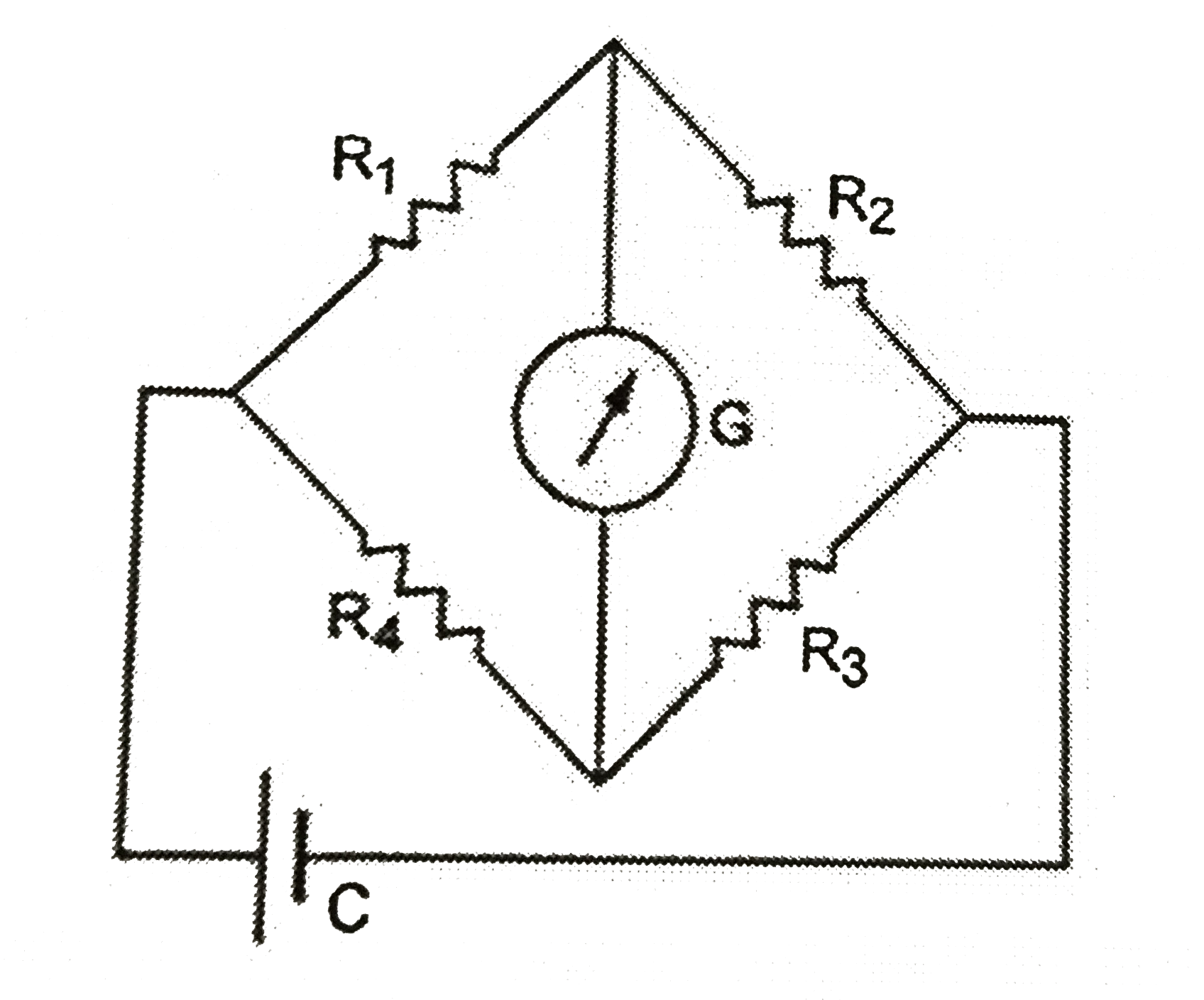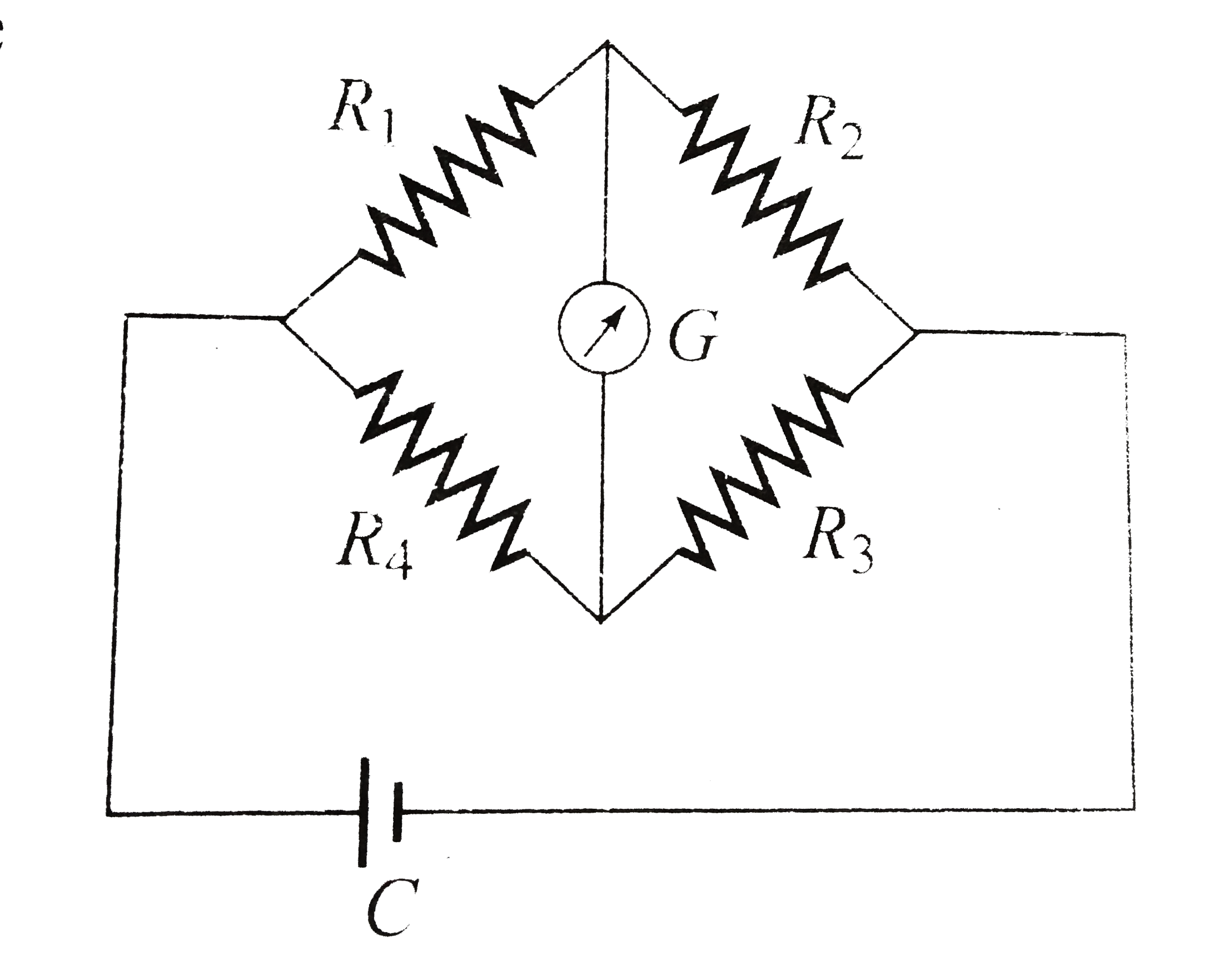If the battery and galvanometer are interchanged then the deflection in galvanometer will
See no change
Change in previous direction
Change in opposite direction
Circuit will die
The correct Answer is:A
To solve the problem, we need to analyze the situation when the battery and galvanometer are interchanged in a circuit. Here’s a step-by-step breakdown of the solution:
Step 1: Understand the Initial Setup
Initially, we have a circuit with a battery connected to a galvanometer. The galvanometer measures the current flowing through the circuit, which is influenced by the voltage provided by the battery and the resistance in the circuit.
Hint: Identify the components in the circuit and their roles. The battery provides voltage, and the galvanometer measures current.
Step 2: Analyze the Circuit with Battery and Galvanometer
In the initial configuration, the galvanometer shows a certain deflection based on the current flowing through it, which is determined by Ohm's law (V = IR). The deflection is proportional to the current that flows through the galvanometer.
Hint: Recall Ohm's law and how it relates voltage, current, and resistance.
Step 3: Interchange the Battery and Galvanometer
When we interchange the battery and the galvanometer, the galvanometer is now connected in such a way that it measures the potential difference across the terminals of the battery. The battery, now in the position of the galvanometer, will provide a voltage that drives current through the circuit.
Hint: Think about how the roles of the components change when they are swapped.
Step 4: Determine the New Reading on the Galvanometer
After the interchange, the galvanometer will still measure the potential difference across the same resistance. The voltage drop across the resistance will still be calculated using the same principles. The reading on the galvanometer will reflect the potential difference, which remains unchanged since the circuit characteristics (resistance and battery voltage) are the same.
Hint: Consider that the potential difference across the resistance remains constant despite the interchange.
Step 5: Conclusion
Since the potential difference across the resistance does not change when the battery and galvanometer are interchanged, the deflection in the galvanometer will also remain unchanged.
Final Answer: The deflection in the galvanometer will be the same (no change).
Initially, we have a circuit with a battery connected to a galvanometer. The galvanometer measures the current flowing through the circuit, which is influenced by the voltage provided by the battery and the resistance in the circuit.
In the initial configuration, the galvanometer shows a certain deflection based on the current flowing through it, which is determined by Ohm's law (V = IR). The deflection is proportional to the current that flows through the galvanometer.
When we interchange the battery and the galvanometer, the galvanometer is now connected in such a way that it measures the potential difference across the terminals of the battery. The battery, now in the position of the galvanometer, will provide a voltage that drives current through the circuit.
After the interchange, the galvanometer will still measure the potential difference across the same resistance. The voltage drop across the resistance will still be calculated using the same principles. The reading on the galvanometer will reflect the potential difference, which remains unchanged since the circuit characteristics (resistance and battery voltage) are the same.
Since the potential difference across the resistance does not change when the battery and galvanometer are interchanged, the deflection in the galvanometer will also remain unchanged.
Topper's Solved these Questions
- BOOK - EDUCART PUBLICATIONCHAPTER - SAMPLE PAPER 6EXERCISE - Section-C6videos
SAMPLE PAPER 6
- BOOK - EDUCART PUBLICATIONCHAPTER - SAMPLE PAPER 6EXERCISE - Section-C6videos
SAMPLE PAPER 6
- BOOK - EDUCART PUBLICATIONCHAPTER - SAMPLE PAPER 5EXERCISE - SECTION - C6videos
SAMPLE PAPER 5
- BOOK - EDUCART PUBLICATIONCHAPTER - SAMPLE PAPER 7EXERCISE - SECTION-C6videos
SAMPLE PAPER 7
Similar Questions
Knowledge Check
- Question 1 - Select One
The deflection in moving coil galvanometer is
Adirectly proportional to the torsional constantBinversely proportional to the area of the coilCinversely proportional to the currentDdirectly proportional to the number of turns in the coil - Question 2 - Select One
The deflection in a moving coil galvanometer is
ADirectly proportional to the torsional constantBDirectily proportional to the number of torsional coilCInversty proportional to the area of coilDInversely proportional to the current flowing - Question 3 - Select One
If in the experiment of Wheatstone's bridge, the positions of cells and galvanometer are interchanged, then balance point will
AChangeBRemain unchanedCDepend on the internal resistance of cell and resistance of galvanometerDNone of these

A two terminal when connected in series with a battery and a galvanometer in series with it through a two way key as shown in figure. The galvanometer shows maximum deflection which gradually decreases to zero, when key k1 is close and k2 open. Now key k1 is open and k2 is closed. Now battery is disconnected and galvanometer is directly connected to the same device the deflection in galvanometer is maximum and reversed and decreases to zero gradually. The device is-View SolutionWhen a shunt of 4Ω is attahced to a galvanometer, the deflection reduces to 15th. If an additional shunt of 2Ω is attached. What will be the deflection?
View Solution
The Wheatstone bridge shown in the above figure is balanced. If the positions of the cell C and the galvanometer G are now interchanged, G will show zero deflectionView SolutionThe Wheatstone's bridge shown in the Fig. A2.5 is balanced. If the positions of the cell C and the galvanometer F are now interchanged, G will show zero deflection
 View Solution
View SolutionThe error in measuring the curent with tangent galvanometer is minimum when the deflection is about
View Solution

